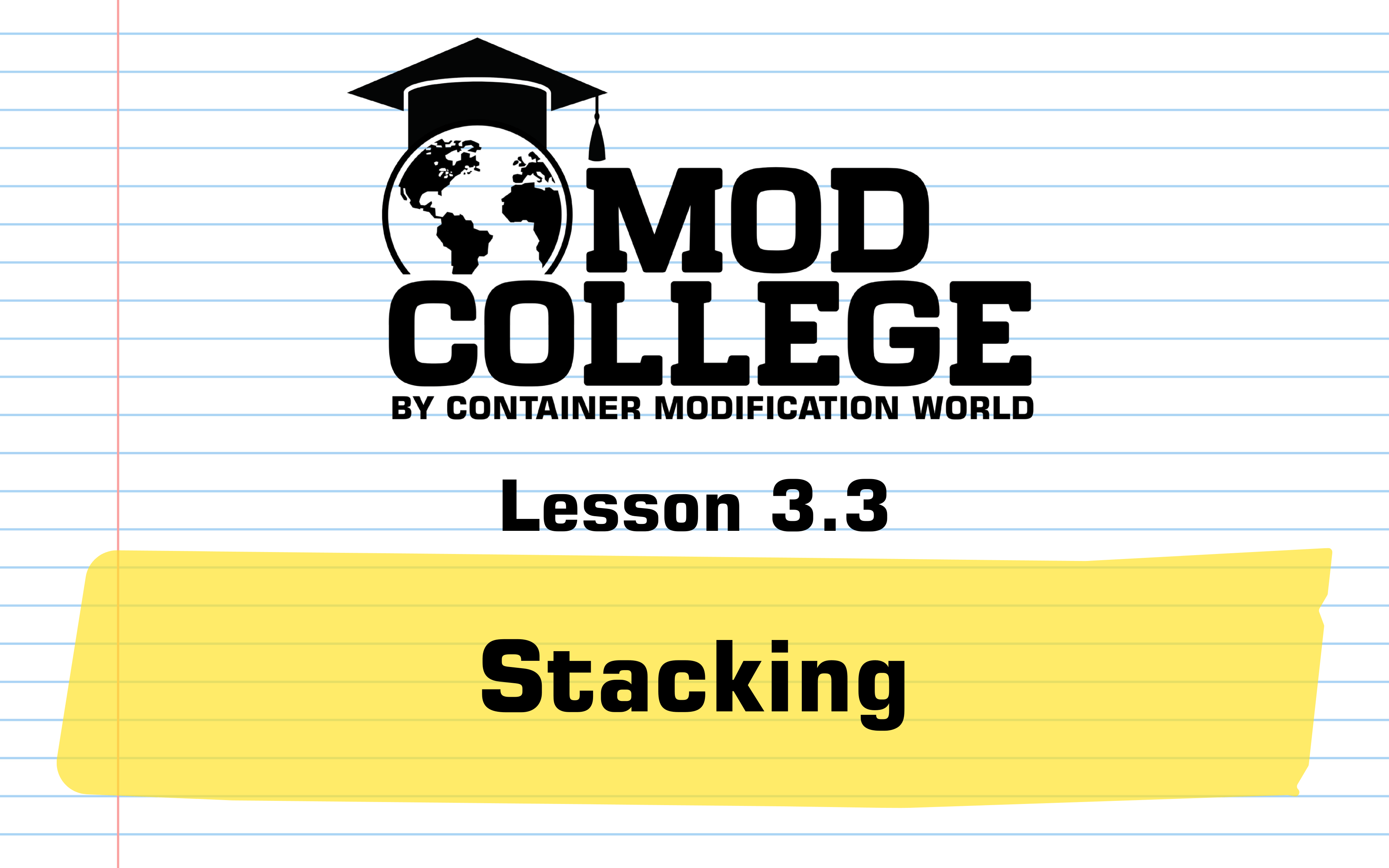
Shipping containers are designed to be stacked. After all, that’s how they travel across oceans and rail lines. Whether you’re adding a second story or creating a tiered office/shop combo, it’s critical to understand how to do it safely, when reinforcement is needed, and what your foundation must support.
Let’s break it down.
Why Stacking Isn’t as Simple as Lifting and Dropping
While shipping containers are built to stack corner to corner, modifications like doors, windows, cutouts, and insulation can compromise that original load-bearing design.
At Container Modification World, we’ve helped customers stack containers for everything from off-grid cabins to industrial pump rooms, but we always stress the importance of engineering your stack, especially once you deviate from the factory structure.
Basic Stacking Rules
Rule #1: Corner-to-Corner is the Only Way
The corner castings of each container are engineered to take the full vertical load. When stacking, always make sure the top container sits directly on the lower container’s corner posts, not the roof panel or side rails.
CMW Tip: Use corner guides or interlocking twistlocks to prevent the top container from shifting during placement.
Rule #2: Use a Level, Load-Bearing Foundation
Stacking two or more containers requires a stable, reinforced base. A poor foundation leads to shifting, bowing, or misalignment, especially if one side settles faster than the other.
Concrete pads, engineered screw piles, or full slab foundations are best.
Rule #3: Avoid Roof Load
Do not place a container directly on the roof panel or corrugated surface. The roof is not load-bearing and will buckle or collapse under weight unless the top unit is properly supported at all four corners.
When Structural Reinforcement Is Needed
You must reinforce your stack if:
- You’ve removed walls or cut out windows/doors from the lower container
- You’re stacking more than two containers
- The container is exposed to wind loads or uneven terrain
- You're cantilevering an upper container
Common Reinforcements:
- Interior steel columns at each corner
- Welded or bolted connector plates between containers
- Cross-bracing or heavy-duty steel framing at large openings
- Bolt-down brackets for anchoring to the ground
CMW Products That Help You Stack Safer
While we don’t provide cranes, we do offer accessories that help ensure your containers stay aligned, secure, and code-friendly:
Quick Attach Tie Downs
Secure corner castings to concrete pads or steel plates for permanent placement.
Secure stacked containers.
Can You Stack After Modification?
Yes, but with caution.
If the container has had:
- Sidewall or end wall removals
- Roof cutouts for skylights or vents
- Major insulation work inside
…you may need engineered supports to handle the extra load. The more you modify the base unit, the more likely it needs reinforcement before stacking.
Not sure? Reach out to a structural engineer or contact us. We’ll help assess your build.
Stacking Don’ts
- Don’t stack on unlevel or soft ground
- Don’t rely on welding thin steel roofs or rails
- Don’t leave stacked containers unsecured (even if temporary)
- Don’t cut major sections out without reinforcing first
- Don’t ignore local building code or permitting requirements



